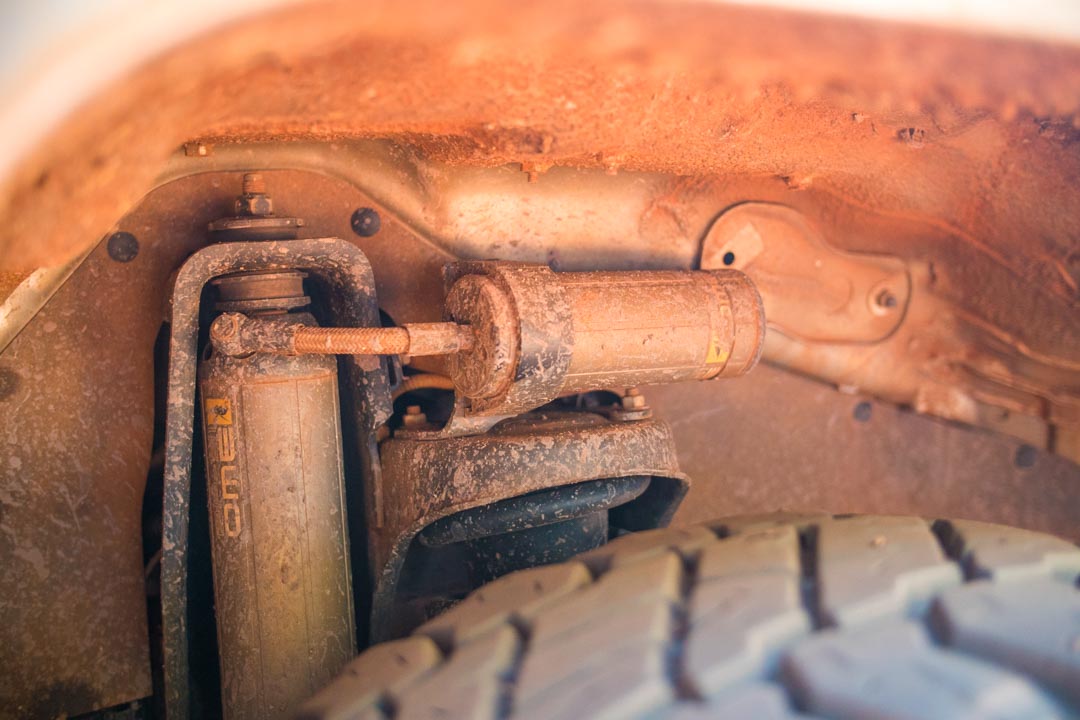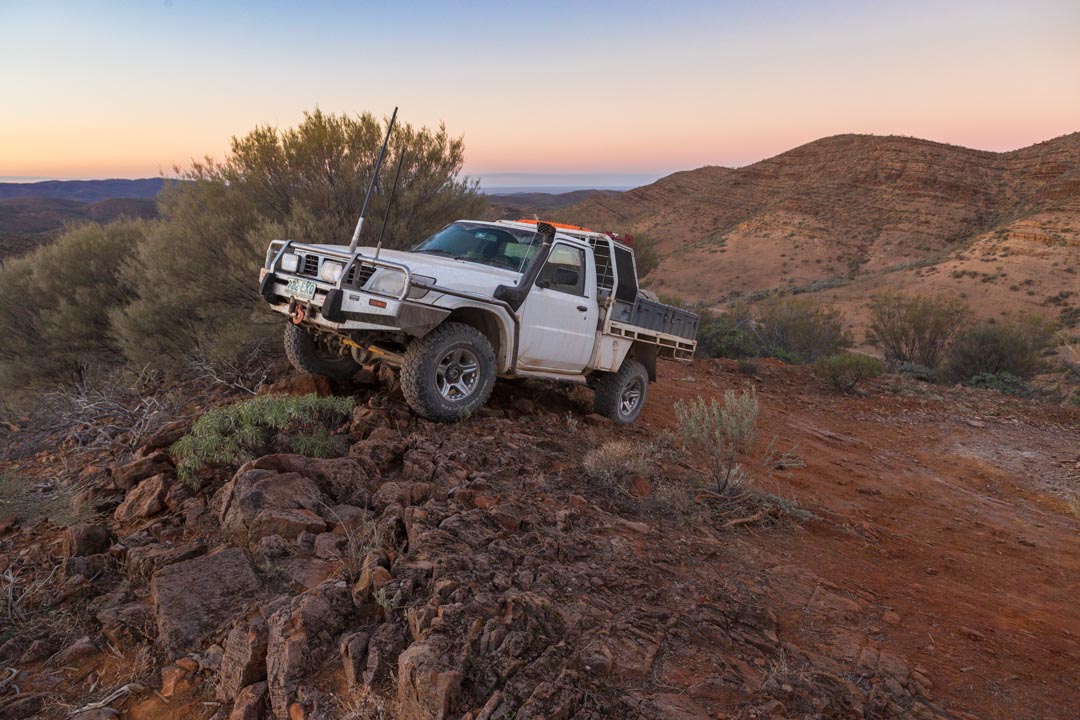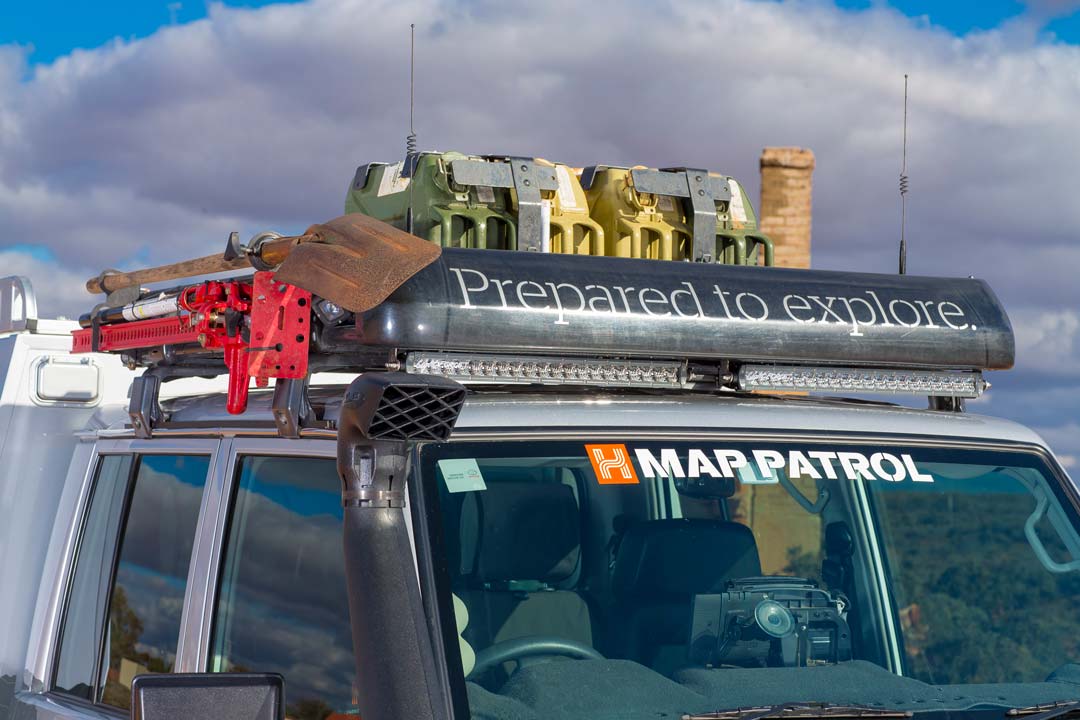:
The Basic 4WD Vehicle Inspection Checklist
Stay safe while you’re travelling and find out how to inspect your four-wheel drive with our Map Patrol’s expert guide to vehicle inspections.
Cape York 4WD Pack
High Country 4WD Pack
Kimberley 4WD Pack
Australia Road & 4WD Atlas
On road trips and off-road adventures, your vehicle is your most valuable asset, which makes vehicle checks an essential safety measure (and an easy way to familiarise yourself with your vehicle). Doing a vehicle check daily will make you more attuned to changes that may arise in your vehicle’s basic components from one day to the next, allowing you to negotiate any problems quickly – not to mention giving you peace of mind in places where you rely on your 4WD.

 During a mapping expedition, the Hema Map Patrol performs a standard vehicle check daily before departing camp – whether it’s in the soft sand of Fraser Island or the rugged corrugations along the Talawana Track – to try to avoid problems and breakdowns before they occur.
During a mapping expedition, the Hema Map Patrol performs a standard vehicle check daily before departing camp – whether it’s in the soft sand of Fraser Island or the rugged corrugations along the Talawana Track – to try to avoid problems and breakdowns before they occur.
So, to stay safe off-road and learn more about your 4WD in the process, try out our Map Patrol’s essential vehicle inspection checklist:
| General vehicle safety | Check seat belts, windows and doors all function. Check child restraint anchors if used. Check placement of first-aid kit, fire extinguishers, reflectors and load binders. |
| Under the hood | Check fluid levels (engine oil, brake, clutch, power steering, water for washers), belts, starter battery (and auxiliary batteries if applicable) mount and terminals. |
| External accessories | Check spot lights, roof rack, aerials, bull bar mount, sand flag and other accessories for mounting tightness and cable security. Check any cargo or fuel is secured. |
| Filters | Look for excess dust and clean and replace air filters as necessary. Check airbox seal is intact and closes correctly. Do a visual check of primary and secondary fuel filters. |
| Under body | Check under vehicle for overnight oil and fluid leaks. General check under body for damaged or loose components. Remove any obstructions such as sticks, grass, excessive mud or otherwise. |
| Suspension | Check shocks for damage or leaks, condition of bushes, springs and spring mounts for damage or cracks. |
| Rear axles | Visual check of rear axle on left and right-hand sides for cracks and oil leaks. |
| Windows | Check windshield and all windows and exterior light lenses, both in terms of cleanliness and visibility. Check windshield wipers and washers are operational. |
| Lights | Ensure all lights are operational: headlights, stoplights, taillights, turn signals, hazard lights, clearance, and reverse lights (verify your headlight alignment regularly). |
| In-cab accessories | Confirm function of any additional gear such as instrument panels, warning lights, gauges, low coolant alarms, rear vision cameras and the like. |
| Cargo | Ensure all items in the cab are safe and secured, including overhead consoles and back seats. |
| Tyres and wheels | Check tyre pressures. Examine tyre side walls and treads for damage or unusual wear. |
| Wheel hubs | Check that hubs are disengaged or engaged according to terrain. Check for cracks in wheels. |
| Brakes | Check that service and parking brakes are operational. |
| Supplies | Fuel, Food and Water sufficient for intended journey |
| Communications | Check any communication devices (satellite phone, SPOT Tracker if used, UHF radio, mobile phone) are charged and functional. |
| Final visual inspection | Full walk-around before moving – check the bonnet, any doors or openings for security, fuel caps and other mounted accessories one last time. |








0 comments